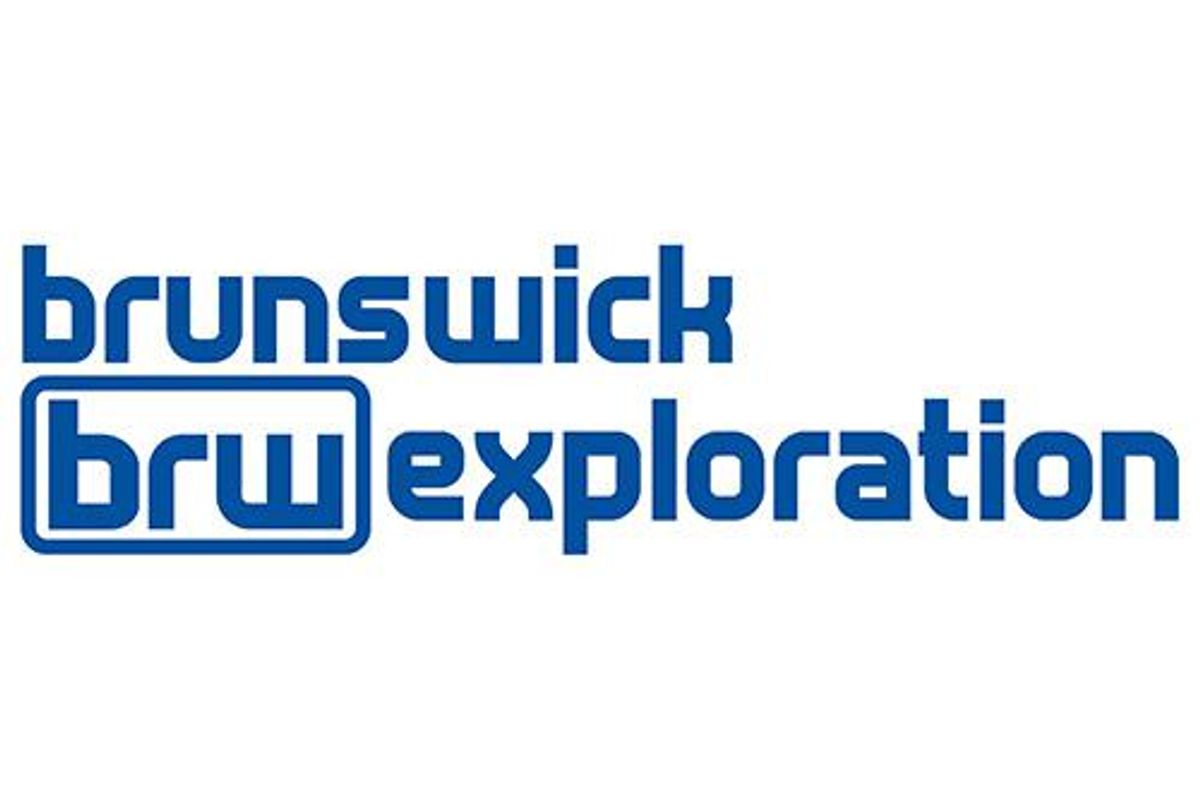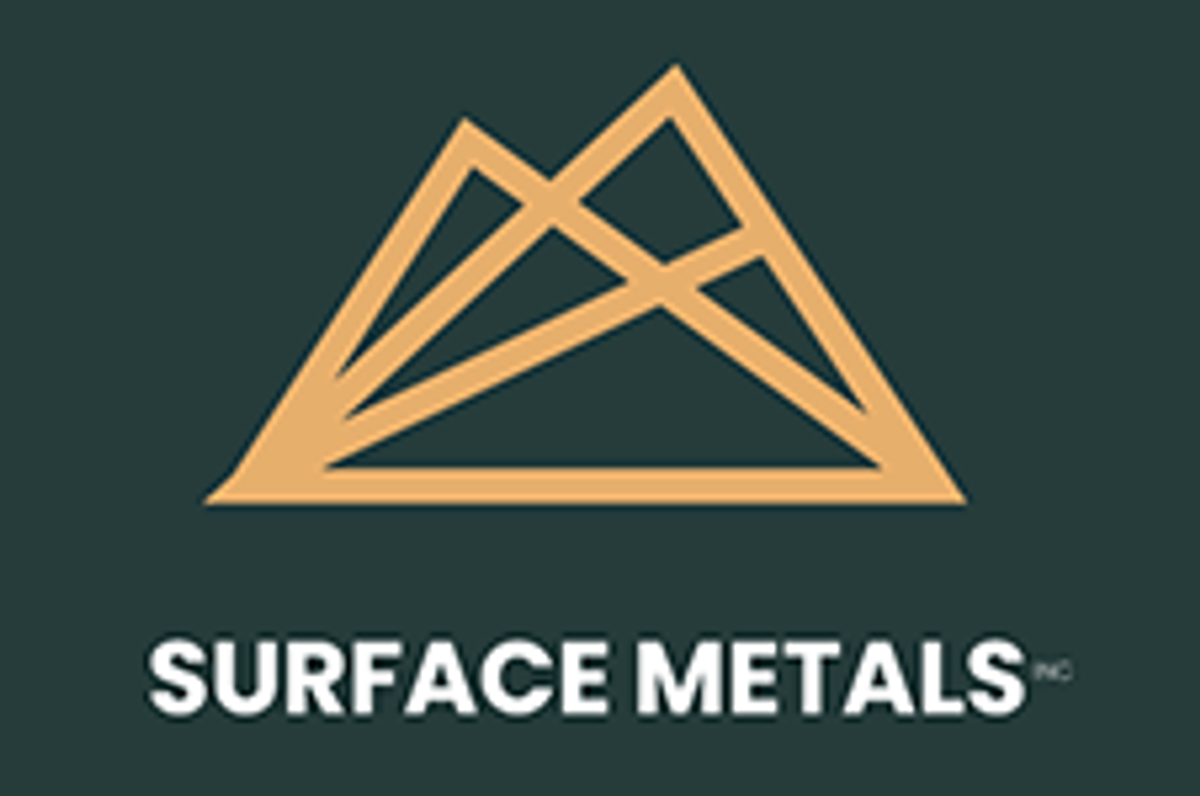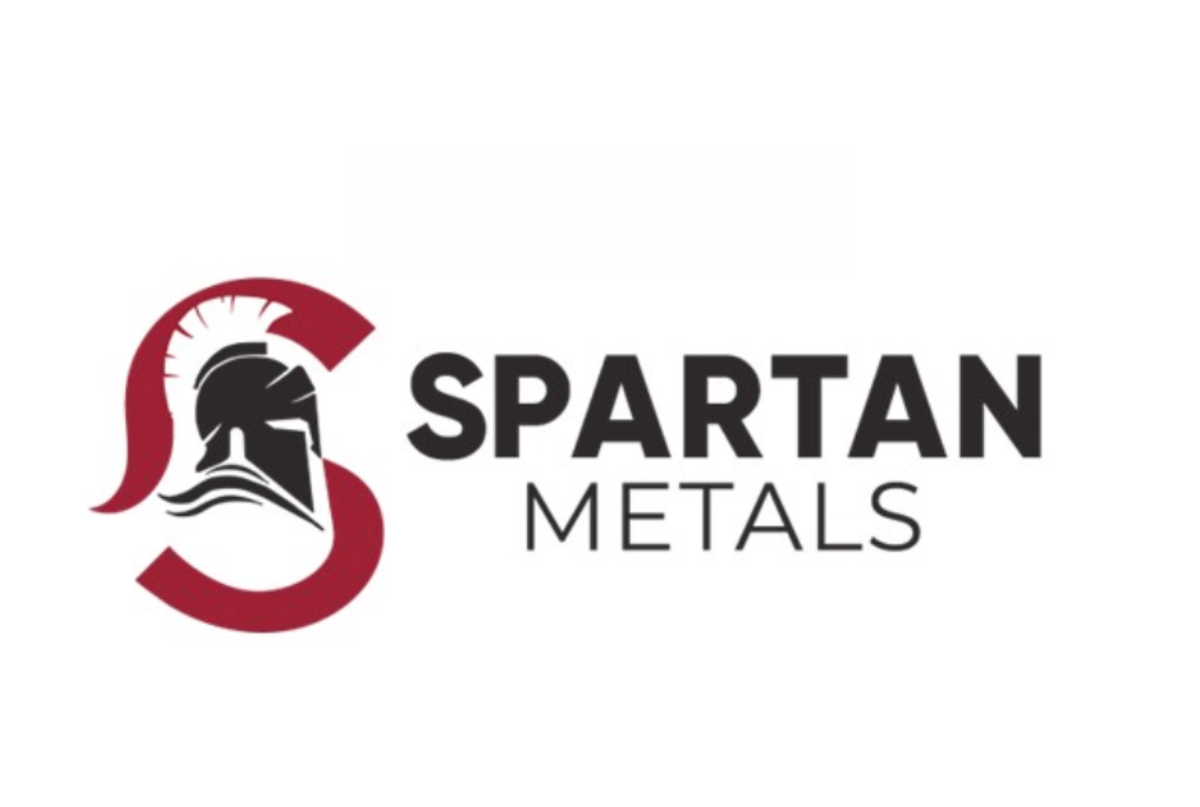
TSX.V: TORC OTCQB: TORCF
TinOne Resources Inc. (TSXV: TORC) (OTCQB: TORCF) ( Frankfurt : 57Z0) (" TinOne " or the " Company ") is pleased to announce that further rock sampling has confirmed and expanded the previously reported lithium discovery at its 100%-owned, 9,600 hectare Aberfoyle Project (" Aberfoyle " or the " Project ") located in the tier-one mining jurisdiction of Tasmania, Australia .
Highlights
- Follow-up surface rock sampling at the Dead Pig and Guinea Pig prospects has returned analyses of up to 1.14% Li 2 O: a total of 43 rock samples were collected in an area of approximately 1 square kilometre (Figures 1, 2 and 3) where eleven samples returned grades ≥0.5% Li 2 O.
- Emerging lithium district: the Company holds a dominant ground position over the prospective lithium-hosting granites in north-east Tasmania .
- Project is underexplored: The Project has never been targeted for lithium mineralization and has also not seen modern systematic exploration for tin and tungsten.
- Complementary research has commenced: Mineralogical research has commenced in conjunction with the world-renowned Centre for Ore Deposit and Earth Sciences at the University of Tasmania (" CODES ").
"We are very excited with the lithium grades achieved to date at Aberfoyle ," commented Chris Donaldson , Executive Chairman. " Results confirm the existence of significant lithium mineralization in north-east Tasmania in a road accessible area that supports resource development. Importantly, we believe that we control a dominant land position over the key prospective granites for lithium mineralization in the state. The discovery of strong lithium mineralization of up to 1.14% Li 2 O at the Three Pigs prospect represents an important milestone for the Company and complements a portfolio of projects with high tin prospectivity. In light of these latest results, we intend to accelerate the lithium exploration activities at our properties in northeast Tasmania while continuing to advance our exciting tin projects."
Key Results
Follow up sampling at the Dead Pig and Guinea Pig prospects have confirmed the earlier discovery of lithium-bearing rocks. A further 43 rock samples were collected over an area of approximately 1 square kilometre at the Dead Pig and Guinea Pig prospects where previous reconnaissance sampling returned five samples with elevated lithium values of 0.1% Li 2 O or above with a maximum of 0.57% Li 2 O (see the Company's news release dated February 8, 2023 ). This new round of sampling has returned eleven samples with Li 2 O > 0.50% and a maximum value of 1.14% Li 2 O.
Sampling to date has defined an area of approximately 12 hectares within which the >0.20% Li 2 O samples occur (Figure 3). Preliminary interpretations indicate that the higher-grade mineralization occurs in NNW-trending parallel zones of so far defined up to 250 m in strike length. Further work is required to better define the surface morphology of the mineralization and the width of mineralized zones.
Greisen alteration of the type sampled at Aberfoyle is a typical alteration style associated with many tin deposits globally and is also associated with certain large scale lithium deposits, where the mica alteration minerals are lithium-bearing. Lithium grades (expressed as Li 2 O) in these mica-hosted deposits are typically in the range 0.3-0.7% Li 2 O.
Table 1. Results and sample descriptions for surface rock samples with Li 2 O grades greater than 0.5%.
| Sample ID | Li 2 O | Sample Description |
| GM10333 | 1.14 % | Greisen vein showing planar contact with wall rock granite. Finely crystalline, dark grey mica |
| GM10353 | 0.84 % | Coarse greisen. Dull green-grey colour with translucent to grey quartz and very fine green-grey |
| GM10349 | 0.78 % | Hard, dense, translucent to pale grey quartz with dull mid-grey mica |
| GM10358 | 0.75 % | Finely crystalline, massive greisen. Dull dark blue grey colour with translucent to grey quartz |
| GM10348 | 0.70 % | Coarse greisen. Dull green-grey colour with translucent to grey quartz and very fine green-grey |
| GM10352 | 0.68 % | Coarse greisen. Dull green-grey colour with translucent to grey quartz and very fine green-grey |
| GM10339 | 0.66 % | Massive greisen. Translucent to pale grey quartz-topaz? with very fine, green-black mica. |
| GM10354 | 0.65 % | Coarse greisen. Dull green-grey colour with translucent to grey quartz and very fine green-grey |
| GM10331 | 0.63 % | Float - cobble. White and dark grey very coarse grained greisen. Translucent quartz and dark |
| GM10343 | 0.59 % | Coarse greisen. Dull green-grey colour with translucent to grey quartz and very fine green-grey |
| GM10350 | 0.59 % | Coarse greisen. Dull green-grey colour with translucent to grey quartz and very fine green-grey |
Next Steps
TinOne's field team continues to undertake geological mapping and additional systematic and targeted rock sampling in the areas identified to-date and in other areas of similar altered granite known from historic records. In order to define the extent of anomalous lithium within soils derived from the granite host, soil sampling in these areas has been completed for a large part of EL27/2004 with first results expected imminently.
In addition to the ongoing work in the lithium-anomalous areas identified on EL27/2004 to date, the Company plans a program of mapping and sampling on the southern outlier part of EL27/2004 at Royal George (Figure 2). This part of the tenement covers an area around the historic Royal George tin mine and is hosted by a similar tin granite to the Dead Pig area. As such, the area is considered highly prospective for both lithium and tin. There has been no effective on-ground exploration in this area for approximately four decades.
The Company has provided samples to CODES for mineral chemistry analytical work to determine the distribution of lithium within the minerals that comprise the lithium-bearing rocks. CODES has an ongoing project entitled "Tasmanian Tin Granites" and has access to highly skilled personnel with significant experience and knowledge in the field of tin granites and geometallurgical studies. This analytical work will inform future studies into the metallurgical characteristics of the lithium mineralization.
Results from ongoing rock sampling are expected in the coming weeks and will be released as soon as they are received.
Figure 1: Location of the Company's projects in the mining friendly jurisdiction of Tasmania
Figure 2: Location plan showing lithium prospect and anomalies on tenement EL27/2004
Figure 3: Location of samples with high lithium in the Dead Pig – Guinea Pig area, also showing old prospecting workings identified by field mapping and from LiDAR. The zone of elevated lithium (>0.20% Li 2 O) is constrained geologically on the western side, however remains open in all other direction s.
Figure 4: Photographs of lithium-bearing rocks from this round of sampling. GM10333 – the right half of the sample is predominantly fine-grained zinnwaldite with coarser quartz and topaz. The left half shows medium to coarse grained quartz and topaz with interstitial fine to very fine-grained zinnwaldite. GM10353 – This sample shows domains of coarse-grained quartz and topaz and domains of fine grained zinnwaldite, quartz and topaz. GM10349 – This sample is comprised of a relatively homogenous distribution of coarse-grained quartz, topaz and zinnwaldite. GM10358 – This is a fine to medium-grained rock with a homogeneous distribution of quartz, topaz and zinnwaldite. Note that these photos are not intended to be representative of broader mineralization on the Project.
Figure 5: Thin section photographs of sample GM10402a taken with polarized light (crossed polars). Coloured grains are zinnwaldite, large ragged grey grains are quartz, smaller dark grains are topaz. Note that this photo is not intended to be representative of broader mineralization on the Project.
Figure 6: Thin section photographs of sample GM10403 taken with polarized light (crossed polars). Coloured grains are zinnwaldite, large grey central grain is topaz. Note that this photo is not intended to be representative of broader mineralization on the Project.
Mineralogical Analysis
Several samples from the Dead Pig prospects were sent to Professor Tony Crawford (University of Tasmania ) for petrographic studies of thin sections cut from the rock samples (Figures 6 and 7). His observations on sample GM10402a, taken from the same outcrop as sample GM10216 (previously reported, 0.57% Li 2 O), indicate that the quartz-topaz-zinnwaldite rock appears " to have crystallized initially as a relatively coarse-grained quartz-zinnwaldite-topaz intergrowth, presumably from granite-related hydrothermal solutions rather than a late-stage, strongly fractionated granitic magma based on the absence of feldspars. A fracturing event was followed by invasion of a strongly acidic hydrothermal fluid that led to local dissolution and recrystallization of the coarser-grained assemblage to the fine-grained quartz-zinnwaldite-topaz aggregates ."
Sample GM10403 (assays pending) is described as " a mineralogically simple but unusual metasomatic/hydrothermal rock ." The zinnwaldite content is estimated at up to 80% of the rock with 10-15% topaz, minor quartz and clay-sericite. Professor Crawford comments that, " the absence of feldspars in this rock suggests that it is likely to have crystallized from a late magmatic hydrothermal solution charged with Li and F."
About the Aberfoyle Project
The Aberfoyle project area straddles the boundary between the Silurian to Devonian Mathinna Supergroup sedimentary rocks and the Devonian Ben Lomond Granite. The historic Aberfoyle (tin) and Storeys Creek (tin-tungsten) mines as well as other vein systems are hosted in the sedimentary rocks and occur as strike extensive systems of sheeted and stockwork veining. Elevated lithium has not previously been reported from the project area.
Historic records and drilling indicate the mineralized vein system at Aberfoyle is up to 60 metres wide, 800 metres in length and extends approximately 400 metres in the down dip direction. The Lutwyche prospect occurs approximately 1 kilometre northeast of Aberfoyle and is comprised of two sets of mineralized veins which can be traced along strike for approximately 750 metres.
An additional sediment-hosted vein system, the Kookaburra, is located 200 metres southwest of the main Lutwyche vein system and is known to be approximately 40 metres wide with an along strike extent of at least several hundred metres.
Mineralization at Storeys Creek is hosted within a 30 to 50 metre wide, north-northwest striking sheeted vein array which dips to the southwest. The system can be traced along strike for 300 metres and extends 400 metres in the down dip direction. The Ben Lomond Granite crops out approximately 1km west of the mine and has been identified at depth at 180 metres below the surface.
Additional poorly known sediment-hosted vein systems occur at Brocks, Eastern Hill and elsewhere in the tenement.
Granite-hosted occurrences are developed throughout the exposed areas of granitoid outcrop and consist of vein, disseminated and breccia style occurrences with associated greisen style alteration. These have given rise to historic small scale hard rock and more extensive alluvial production in the Gipps Creek, Rex Hill , Ben Lomond , Royal George and other areas.
The Company interprets that both sediment- and granite-hosted systems have developed in structural corridors of multi-kilometre extent and that historic exploration has not systematically explored these corridors. TinOne believes systematic exploration of these prospective corridors will result in the definition of high-quality drill targets.
Sample Methodology
Rock samples reported here were collected by experienced geologists from outcrop, float and historical mining spoil dumps. Samples were typically 1.5 to 2.5 kg and were placed in pre-numbered, calico bags and then into large rice sacks which were sealed for shipping. Due to the nature of the available sample media, the samples are not continuous channel samples and consist of multiple individual small rock pieces collected from an area considered representative of the lithology being sampled.
Quality Assurance / Quality Control
Rock samples were delivered to ALS Limited in Burnie, Australia for sample preparation and then forwarded to ALS Brisbane for analysis. The ALS Brisbane facilities are ISO 9001 and ISO/IEC 17025 certified. Tin and tungsten are analysed by ICP-MS following lithium borate fusion (ALS method ME-MS85), overlimit results are reanalysed by XRF (ALS method XRF15b). Forty-eight element multi-element analyses are conducted by ICP-MS after a four-acid digestion (ALS method ME-MS61).
Control samples comprising certified reference samples (including reference material certified for lithium) duplicates and blank samples were systematically inserted into the sample stream and analyzed as part of the Company's quality assurance / quality control protocol.
About TinOne
TinOne is a TSX Venture Exchange listed Canadian public company with a high-quality portfolio of tin, tin/tungsten and lithium projects in the Tier 1 mining jurisdictions of Tasmania and New South Wales, Australia . The Company controls some of the most important tin districts in Tasmania , including Aberfoyle , Rattler Range and Great Pyramid and is focussed on advancing its highly prospective portfolio. TinOne is supported by Inventa Capital Corp.
Qualified Person
The Company's disclosure of technical or scientific information in this press release has been reviewed and approved by Dr. Stuart Smith ., Technical Adviser for TinOne. Dr. Smith is a Qualified Person as defined under the terms of National Instrument 43-101.
Neither TSX Venture Exchange nor its Regulation Services Provider (as that term is defined in policies of the TSX Venture Exchange) accepts responsibility for the adequacy or accuracy of this release.
SPECIAL NOTE REGARDING FORWARD LOOKING STATEMENTS
This news release includes certain "Forward–Looking Statements" within the meaning of the United States Private Securities Litigation Reform Act of 1995 and "forward–looking information" under applicable Canadian securities laws. When used in this news release, the words "anticipate", "believe", "estimate", "expect", "target", "plan", "forecast", "may", "would", "could", "schedule" and similar words or expressions, identify forward–looking statements or information. These forward–looking statements or information relate to, among other things: the development of the Company's projects; future mineral exploration, development and production; and the release of exploration results.
Forward–looking statements and forward–looking information relating to any future mineral production, liquidity, enhanced value and capital markets profile of TinOne, future growth potential for TinOne and its business, and future exploration plans are based on management's reasonable assumptions, estimates, expectations, analyses and opinions, which are based on management's experience and perception of trends, current conditions and expected developments, and other factors that management believes are relevant and reasonable in the circumstances, but which may prove to be incorrect. Assumptions have been made regarding, among other things, the price of gold and other metals; no escalation in the severity of the COVID-19 pandemic; costs of exploration and development; the estimated costs of development of exploration projects; TinOne's ability to operate in a safe and effective manner and its ability to obtain financing on reasonable terms.
These statements reflect TinOne's respective current views with respect to future events and are necessarily based upon a number of other assumptions and estimates that, while considered reasonable by management, are inherently subject to significant business, economic, competitive, political and social uncertainties and contingencies. Many factors, both known and unknown, could cause actual results, performance or achievements to be materially different from the results, performance or achievements that are or may be expressed or implied by such forward–looking statements or forward-looking information and TinOne has made assumptions and estimates based on or related to many of these factors. Such factors include, without limitation: the Company's dependence on early stage mineral projects; metal price volatility; risks associated with the conduct of the Company's mining activities in Australia ; regulatory, consent or permitting delays; risks relating to reliance on the Company's management team and outside contractors; risks regarding mineral resources and reserves; the Company's inability to obtain insurance to cover all risks, on a commercially reasonable basis or at all; currency fluctuations; risks regarding the failure to generate sufficient cash flow from operations; risks relating to project financing and equity issuances; risks and unknowns inherent in all mining projects, including the inaccuracy of reserves and resources, metallurgical recoveries and capital and operating costs of such projects; contests over title to properties, particularly title to undeveloped properties; laws and regulations governing the environment, health and safety; the ability of the communities in which the Company operates to manage and cope with the implications of COVID-19; the economic and financial implications of COVID-19 to the Company; operating or technical difficulties in connection with mining or development activities; employee relations, labour unrest or unavailability; the Company's interactions with surrounding communities and artisanal miners; the Company's ability to successfully integrate acquired assets; the speculative nature of exploration and development, including the risks of diminishing quantities or grades of reserves; stock market volatility; conflicts of interest among certain directors and officers; lack of liquidity for shareholders of the Company; litigation risk; and the factors identified under the caption "Risk Factors" in TinOne's management discussion and analysis. Readers are cautioned against attributing undue certainty to forward–looking statements or forward-looking information. Although TinOne has attempted to identify important factors that could cause actual results to differ materially, there may be other factors that cause results not to be anticipated, estimated or intended. TinOne does not intend, and does not assume any obligation, to update these forward–looking statements or forward-looking information to reflect changes in assumptions or changes in circumstances or any other events affecting such statements or information, other than as required by applicable law.
SOURCE TinOne Resources Corp.

![]() View original content to download multimedia: https://www.newswire.ca/en/releases/archive/March2023/15/c5635.html
View original content to download multimedia: https://www.newswire.ca/en/releases/archive/March2023/15/c5635.html















